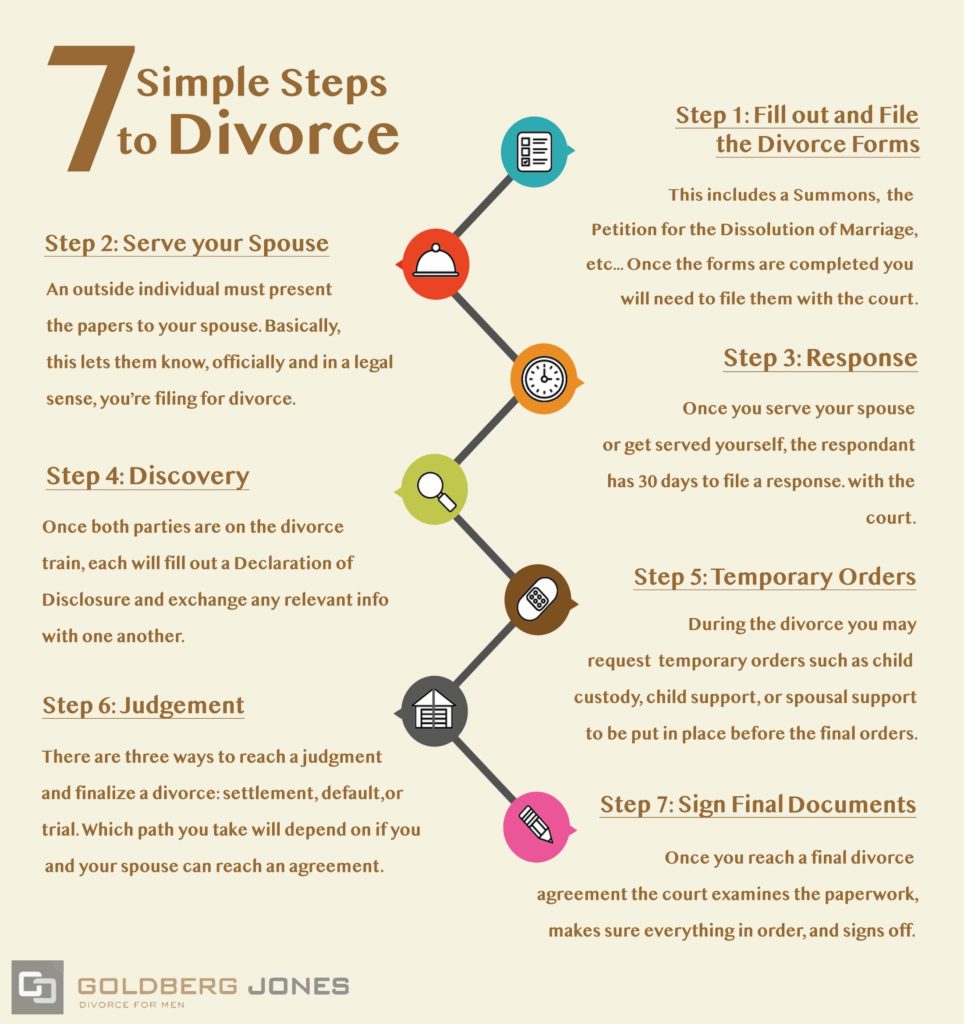Divorce and child custody can be complex and emotional processes, especially when it comes to navigating the legal system. If you’re wondering how to file for divorce and child custody in California, you’ve come to the right place! In this article, we’ll walk you through the steps and provide you with valuable information to make the process smoother and less overwhelming.
California is known for its unique laws and regulations, and divorce and child custody cases are no exception. From understanding the paperwork to negotiating custody agreements, there are various aspects to consider. We’ll guide you through the process, highlighting important points, and offering practical tips to help you achieve the best outcome for you and your children. So, let’s dive in and explore the ins and outs of filing for divorce and child custody in California!
How to File for Divorce and Child Custody in California?
If you’re seeking a divorce and need to establish child custody in California, here’s a step-by-step guide:
- Consult an Attorney: Start by consulting a family law attorney to understand the legal process and your rights.
- Gather Necessary Documents: Collect important documents such as marriage certificate, financial records, and any existing custody agreements.
- File Petition for Divorce: Prepare and file the necessary divorce forms at your local courthouse.
- Notify Your Spouse: Serve your spouse with a copy of the divorce petition and related documents.
- Attend Mediation or Custody Evaluation: If unable to agree on custody, attend mediation or a custody evaluation to resolve the matter.
- Create a Parenting Plan: Work with your attorney to develop a parenting plan that outlines custody and visitation arrangements.
- File the Parenting Plan: File the agreed-upon parenting plan with the court.
- Attend Court Hearings: Attend court hearings to present your case and finalize the divorce and custody arrangements.
Remember, it’s important to consult with an attorney throughout the process to ensure your rights and the best interests of your child are protected.

How to File for Divorce and Child Custody in California?
Filing for divorce and navigating the complexities of child custody can be a challenging and emotional process. If you find yourself in this situation in California, it’s important to understand the legal requirements and procedures involved. This article will guide you through the steps of filing for divorce and handling child custody matters in the state of California.
Understanding the Divorce Process in California
When filing for divorce in California, there are certain factors to consider. First, California is a no-fault divorce state, which means that neither party is required to prove wrongdoing or assign blame for the breakdown of the marriage. Instead, either spouse can file for divorce based on irreconcilable differences.
To initiate the divorce process, one spouse must file a Petition for Dissolution of Marriage with the court. This document outlines the grounds for the divorce and any requests for child custody, spousal support, and division of assets. The petitioner must then serve the petition to the other spouse, who has the opportunity to respond.
Gathering the Necessary Documentation
Before filing for divorce, it’s essential to gather all relevant documentation to support your case. This includes financial records, such as bank statements, tax returns, and property deeds. Additionally, you should gather any evidence related to child custody, such as school records, medical documents, or evidence of any past incidents of domestic violence.
By compiling these documents early on, you’ll be better prepared to present your case and protect your interests during the divorce proceedings.
Considering Mediation or Collaborative Divorce
While traditional litigation is one option for resolving divorce and child custody disputes, alternative methods like mediation or collaborative divorce can offer a more amicable and less adversarial approach.
In mediation, a neutral third party helps facilitate communication and negotiation between the divorcing spouses, with the goal of reaching mutually agreeable solutions. Collaborative divorce involves each spouse retaining their own attorney but committing to resolving issues outside of court, with the help of other professionals, such as financial advisors or child custody specialists.
Child Custody in California
When it comes to child custody matters in California, the court’s primary consideration is the best interests of the child. The court aims to promote stability and continuity in the child’s life while ensuring their physical and emotional well-being.
In California, there are two types of custody: legal custody and physical custody. Legal custody refers to the decision-making authority over the child’s welfare, including education, healthcare, and religious upbringing. Physical custody, on the other hand, determines where the child will reside and spend their time.
Types of Child Custody Arrangements
California recognizes various types of child custody arrangements, including:
- Sole custody: One parent has both legal and physical custody of the child.
- Joint legal custody: Both parents share decision-making authority, even if the child primarily resides with one parent.
- Joint physical custody: The child spends significant time with both parents, and they share physical custody.
- Bird’s nest custody: The child remains in one home, and the parents take turns living there based on a predetermined schedule.
The court will consider factors such as the child’s age, their relationship with each parent, and the ability of each parent to provide a stable and nurturing environment when determining the appropriate custody arrangement.
Co-Parenting and Parenting Plans
When determining child custody, the court encourages parents to develop a parenting plan that outlines how they will share responsibilities and make decisions regarding the child’s upbringing. A parenting plan may include details about visitation schedules, holidays, and vacations, as well as guidelines for communication and dispute resolution.
Co-parenting, or effectively working together as parents despite the divorce, is crucial for the well-being of the child. It involves open communication, respect for each other’s parenting styles, and a focus on the child’s best interests.
Conclusion
Divorce and child custody proceedings in California can be complex and emotionally challenging. Understanding the legal requirements and options available to you is essential for navigating this process successfully. By following the necessary steps and seeking professional guidance when needed, you can ensure that the best interests of both yourself and your child are protected throughout the divorce and child custody proceedings.
Key Takeaways: How to File for Divorce and Child Custody in California?
- Filing for divorce and child custody in California requires following specific legal procedures.
- Start by gathering all necessary documents such as marriage certificates and financial records.
- Consult with an attorney to understand the legal requirements and options available to you.
- File the necessary forms with the court and pay the required fees.
- Attend court hearings and provide evidence to support your case for child custody.
Frequently Asked Questions
Are you considering filing for divorce and child custody in California? Here are some commonly asked questions and their answers to help guide you through the process.
1. What are the residency requirements to file for divorce and child custody in California?
In order to file for divorce and child custody in California, either you or your spouse must have been a resident of the state for at least six months prior to filing. Additionally, you or your spouse must have lived in the county where you plan to file for at least three months.
If you do not meet these residency requirements, you may need to wait until you fulfill them before initiating the legal process.
2. What are the steps involved in filing for divorce and child custody in California?
The first step is to complete the necessary forms. These forms typically include a petition for divorce, a summons, and various financial disclosure forms. Once you have completed the forms, you will need to file them with the appropriate court and pay the filing fee.
After filing, you will need to serve the papers to your spouse. This can be done through personal service, where someone over the age of 18 delivers the papers to your spouse, or by using a professional process server. Once your spouse has been served, they will have a certain amount of time to respond.
3. How is child custody determined in California?
In California, child custody is determined based on the best interests of the child. The court considers various factors when making a custody determination, including the child’s age, health, and relationship with each parent. The court may also take into account any history of domestic violence or substance abuse.
In some cases, the court may order a custody evaluation, where a mental health professional assesses the parents and the child to make recommendations regarding custody arrangements. Ultimately, the court will make a custody decision that promotes the child’s well-being.
4. Can I file for divorce and child custody without an attorney?
While it is possible to file for divorce and child custody without an attorney, it is generally recommended to seek legal representation, especially if the case is complex or contentious. An attorney can help ensure that your rights and interests are protected throughout the process.
If you cannot afford an attorney, you may be eligible for free or low-cost legal services through organizations such as Legal Aid or your local bar association’s pro bono program.
5. What happens if there is a dispute over child custody?
If you and your spouse cannot reach an agreement on child custody, the court will make a decision based on the best interests of the child. The court may order mediation to help facilitate a resolution, or it may appoint a guardian ad litem to represent the child’s interests.
If a custody hearing is necessary, each parent will have the opportunity to present evidence and arguments to support their desired custody arrangement. The court will consider all relevant factors before making a final decision.
Final Summary: Navigating Divorce and Child Custody in California
After diving into the ins and outs of filing for divorce and child custody in California, it’s clear that this process can be complex and emotionally challenging. However, armed with the right information and resources, you can navigate through it with confidence. Remember, the key to a successful outcome lies in understanding the legal requirements, seeking professional guidance, and prioritizing the well-being of your children.
When it comes to filing for divorce in California, it’s crucial to meet the residency requirements, gather the necessary documentation, and explore alternative dispute resolution methods such as mediation or collaborative divorce. This not only saves time and money but also promotes a more amicable separation. Additionally, consulting with an experienced family law attorney can provide invaluable support and ensure that your rights and interests are protected throughout the process.
Child custody matters require careful consideration of the best interests of the child. California courts prioritize the child’s safety, well-being, and stability when making custody decisions. As a parent, it’s important to demonstrate your ability to provide a loving and nurturing environment for your child. Maintaining open communication with your ex-spouse, cooperating in co-parenting responsibilities, and creating a detailed parenting plan are key steps in securing a positive outcome.
While the road to divorce and child custody in California may be challenging, remember that you are not alone. Seek support from friends, family, and professionals who can guide you through this journey. By staying informed, making well-informed decisions, and always prioritizing the best interests of your children, you can navigate this process with strength and resilience.
